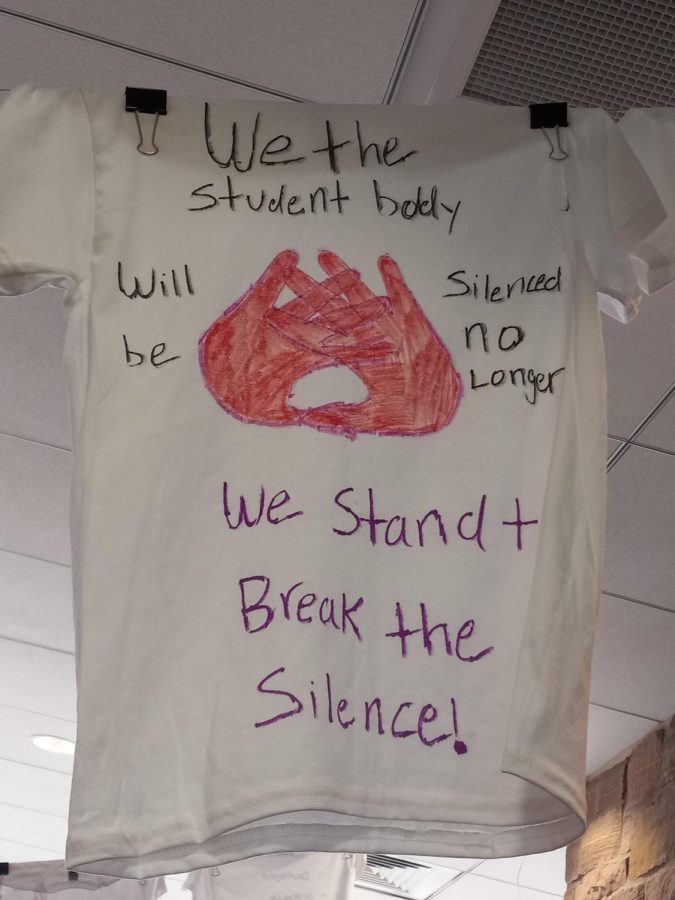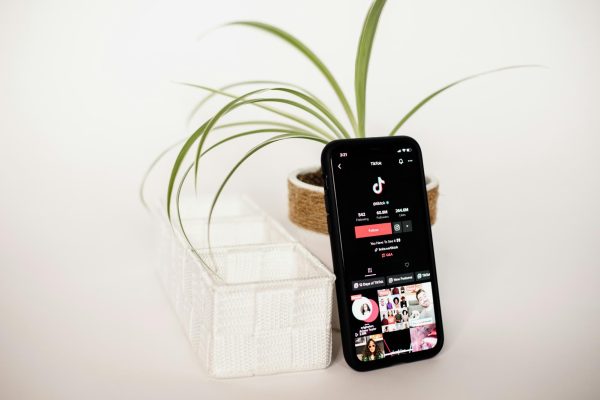Sexual Abuse Survivors Share Out Through The Clothesline Project
Marked-up shirts strung on clotheslines in the Fireside Lounge on April 18th, displaying Champlain students’ powerful messages about their experiences with sexual abuse.
This movement is known as The Clothesline Project, which was started by Rachel Carey-Harper in Cape Cod in 1990 and has since empowered victims on an international scale. Protests began due to a staggering number of women facing domestic violence, specifically during the Vietnam War. The use of clotheslines is intended to turn the stereotype of the ideal housewife over its head, and the method of drawing on shirts was inspired by the AIDS quilt.
Criminal Justice major Angel Gallien (‘22) has organized her own version of the Clothesline Project at Champlain. As someone with a background in helping victims of abuse and has survived sexual assault, she is determined to continue helping and leading others to paths of healing and sex education.
For her Capstone project, Gallien is speaking with students about their experiences submitting Title IX reports on campus. She is also collaborating with survivors and allies to understand what resources and events that they would like to see at Champlain.
The feedback given from these interactions led her to collaborate with the Women’s and Gender Center and add ideas to the Sexual Assault Awareness and Prevention Month Series here on campus. Through this series, students were given opportunities to be involved through taking pledges against sexual violence, writing letters to survivors in solidarity and other powerful initiatives. She hopes her contributions will break the silence regarding sexual abuse and as she describes, “Leave behind a legacy, a change before [I] leave.”
In the days leading up to the display, Gallien tabled in the atrium with piles of blank white shirts, markers, and awareness stickers. In this spot, she has expressed that sexual assault and her reinvention of The Clothesline Project are umbrella experiences that represent sexual harassment, consent and other lesser discussed terms are very much prevalent. Teal sexual assault awareness ribbons have been placed in the atrium as well.
These efforts are intended to defend and heal participants and those seeking recognition. Leaving the heavy-lifting on decision-making and communication to victims can severely derail their recovery process. Given that mainstream conversations surrounding sexual abuse are still coming to the forefront, it is by no means an easy task to address how best to approach sensitive cases. This initiative is a great opportunity to open these conversations, especially considering Gallien’s brave and sincere intentions.
Over the past few months, in particular, students have expressed dissatisfaction with the Title IX office. This article highlighted activity on an anonymous Instagram page where students shared issues of communication with the Title IX office. Gallien feels issues like this “…diminishes the survivor’s experience, saying it’s not severe enough to have anything done, and rewards the offender instead. That’s not ok.” She argues that the current system “does not represent the college to its fullest potential.”
Some dismiss survivors by claiming that “rape culture doesn’t exist,” or that “change is not needed.” To this, Gallien responds, “Until you dig and talk to the right people, you don’t talk about what’s been hidden, not uncovered.” Given the sensitive nature and ever-present stigma that surrounds sexual abuse, it truly is difficult to discern what the “culture” or general grasp of discussions and actions even is.
This is the sweeping-under-the-rug of topics that have such a stronghold on those it affects most should continue to be combatted, making Gallien’s efforts all the more necessary. They have brought forward learning opportunities not just on an individual level, but on a community level. Not everyone is affected by sexual abuse, though it is deeply reassuring to know that there are members of our community that are actively thinking of others that may need support.
While The Clothesline Project has specialized in representing women’s voices, Gallien notes that “Everybody can be held accountable, rape doesn’t just happen to women, but to anyone.” This justifiably implies that although sexual abuse is in large-part a misogynist form of abuse, victims deserve equal representation and justice regardless of gender identity. The clothesline is intended to turn misogyny over its head, but the gender neutrality of t-shirts is another great aspect of this form of protest that makes it feel more inclusive.

One of the shirts reads, “It wasn’t our clothes, our words or anything. We said no, but you violated!”Another shirt reads, “unwanted texts | stares | touches | lingers.” Another shirt shows two linked hands with the surrounding text saying, “We the student body will be silenced no longer | We stand + break the silence!” One has a drawing of an eye, followed by, “[I] am ….strong ….here ….you.” Clearly, these shirts were a very effective outlet for survivors to express themselves.
“You’d be amazed at what students have to say,” she says. In response to how the event went, she adds, “The turnout was pretty impressive, a lot of people said that they loved [the movement] being brought to campus and that someone was creating an event to bring awareness and support survivors.”
Angel isn’t the only student providing a safe space for victims of sexual misconduct. A student-run solidarity walkout against sexual assault will be held Thursday, April 28 at 12:3o p.m. by the Samuel de Champlain statue.
For resources on sexual abuse, RAINN (Rape, Abuse & Incest National Network) has an extensive list of resources which includes the following:
National Sexual Assault Hotline or 800-656-HOPE





